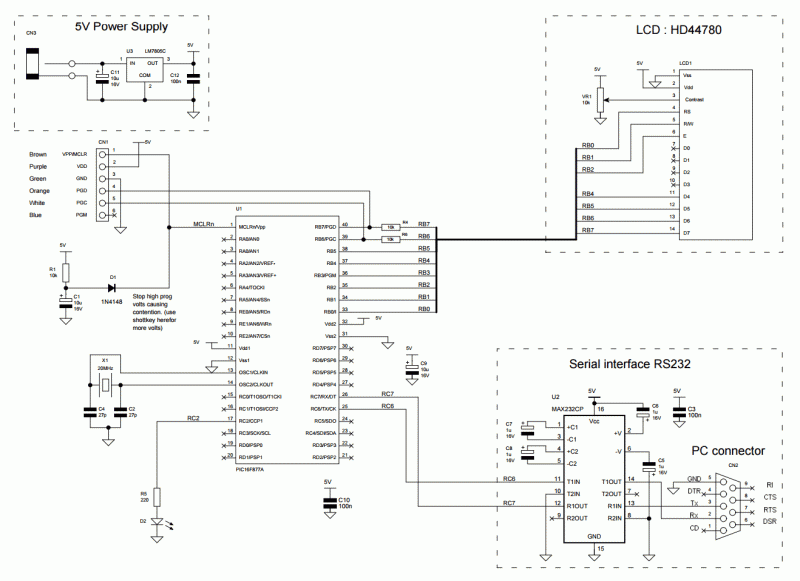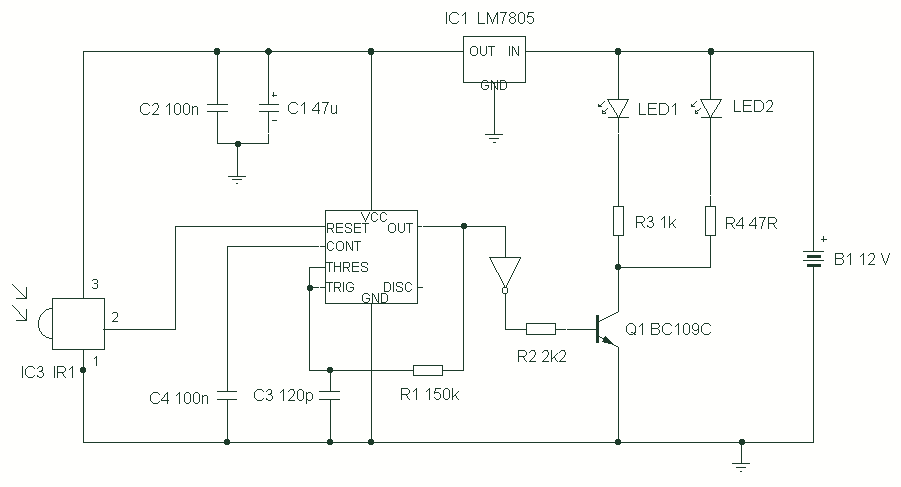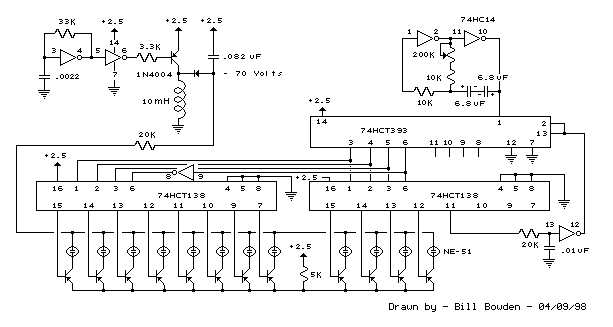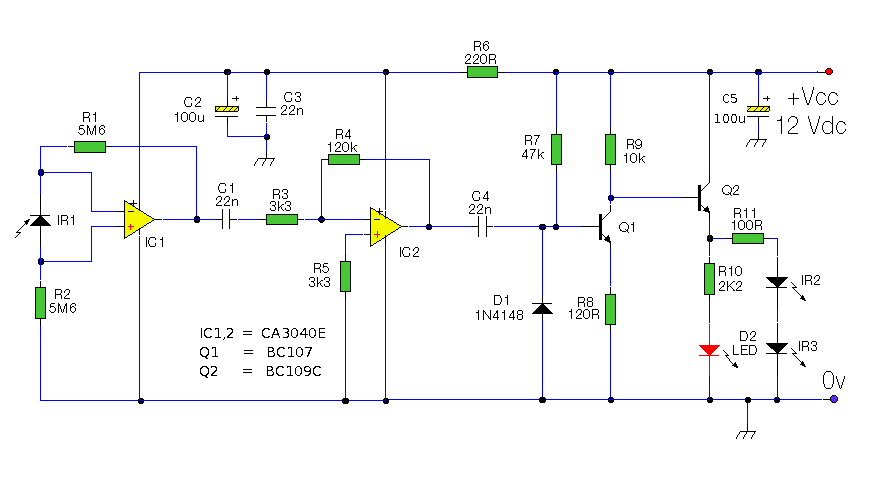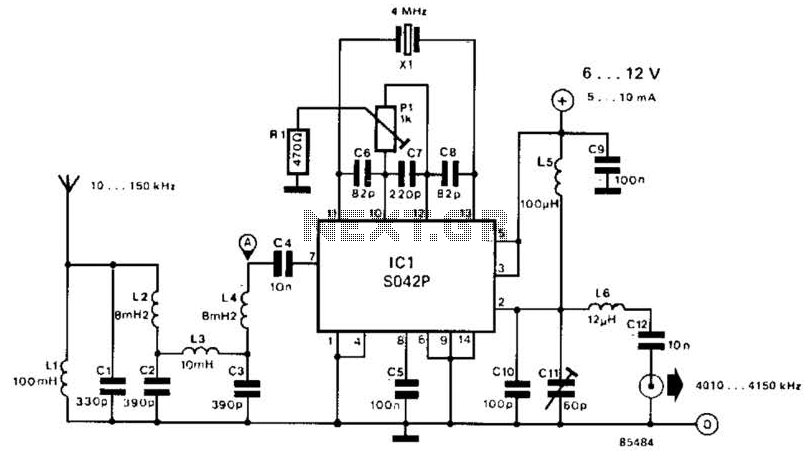
A Christmas lights circuit
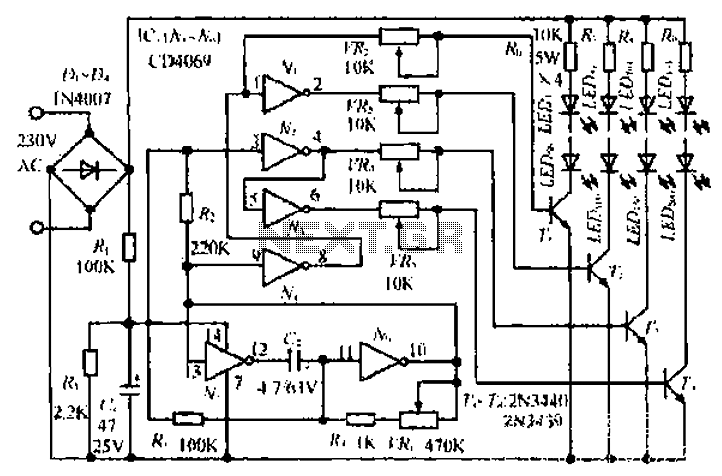
An air bridge after the bullock Phi Beach in Sichuan utilizes direct beam lights. Control is implemented for six buildings with filtered output at specific voltage levels. The system includes a small 4H servant for pressure control, and components such as the 2N3440 or 2N343Q transistors. A holding system is integrated with a limiting resistor to manage base current for the transistors. The circuit features adjustments for frequency cut-off, with capacitors selected for their electrical properties to optimize performance.
An air bridge system is designed to enhance lighting control and efficiency in complex environments, such as the area surrounding Phi Beach in Sichuan. This system incorporates direct beam lights strategically positioned to illuminate six buildings. The control mechanism is crucial, as it manages the filtered output voltage, ensuring that each light operates within its optimal range.
The circuit employs a small 4H servant, which functions as a pressure control device, maintaining consistent operational parameters. Key components include transistors, specifically the 2N3440 and 2N343Q, which are chosen for their reliability and performance in switching applications. These transistors are part of a holding system that regulates the power supplied to the lights.
To ensure proper functionality, a limiting resistor is included in the design. This resistor is vital for managing the base current supplied to the transistors, preventing overload and ensuring stable operation. The circuit design also features frequency cut-off adjustments, allowing for fine-tuning of the system's response to varying conditions.
The selection of capacitors plays a significant role in the overall efficiency of the circuit. High-quality capacitors are utilized to ensure that the electrical characteristics meet the demands of the application, contributing to the system's reliability and longevity. This comprehensive approach to circuit design underscores the importance of each component in achieving optimal performance in lighting control systems.An air bridge after whole bullock Phi Beach, Sichuan hoof direct beam lights Wherever control called road six buildings frog buck filtered output ul fiV altar right voltage for six cassette awning device] cI guanidine .rXtTi clamor phase ir is the county get Icheon, tie a small 4H servant Shenzhen Vladimir pressure control 4H boat swollen Mourning tube L-7 ; (nf election Sichuan 2N3440 or 2N343q), rhTi -1j holding system 200 LI/D and L Zhun Sh ) on the string iOkn, Sw limiting resistor. n0 spare transistor base current to the base of the crucible corresponding electrical circuit ll snapped lOkn busy is performed -i whole.
the remaining were the two inverted J He set low * t141i
An air bridge system is designed to enhance lighting control and efficiency in complex environments, such as the area surrounding Phi Beach in Sichuan. This system incorporates direct beam lights strategically positioned to illuminate six buildings. The control mechanism is crucial, as it manages the filtered output voltage, ensuring that each light operates within its optimal range.
The circuit employs a small 4H servant, which functions as a pressure control device, maintaining consistent operational parameters. Key components include transistors, specifically the 2N3440 and 2N343Q, which are chosen for their reliability and performance in switching applications. These transistors are part of a holding system that regulates the power supplied to the lights.
To ensure proper functionality, a limiting resistor is included in the design. This resistor is vital for managing the base current supplied to the transistors, preventing overload and ensuring stable operation. The circuit design also features frequency cut-off adjustments, allowing for fine-tuning of the system's response to varying conditions.
The selection of capacitors plays a significant role in the overall efficiency of the circuit. High-quality capacitors are utilized to ensure that the electrical characteristics meet the demands of the application, contributing to the system's reliability and longevity. This comprehensive approach to circuit design underscores the importance of each component in achieving optimal performance in lighting control systems.An air bridge after whole bullock Phi Beach, Sichuan hoof direct beam lights Wherever control called road six buildings frog buck filtered output ul fiV altar right voltage for six cassette awning device] cI guanidine .rXtTi clamor phase ir is the county get Icheon, tie a small 4H servant Shenzhen Vladimir pressure control 4H boat swollen Mourning tube L-7 ; (nf election Sichuan 2N3440 or 2N343q), rhTi -1j holding system 200 LI/D and L Zhun Sh ) on the string iOkn, Sw limiting resistor. n0 spare transistor base current to the base of the crucible corresponding electrical circuit ll snapped lOkn busy is performed -i whole.
the remaining were the two inverted J He set low * t141i
